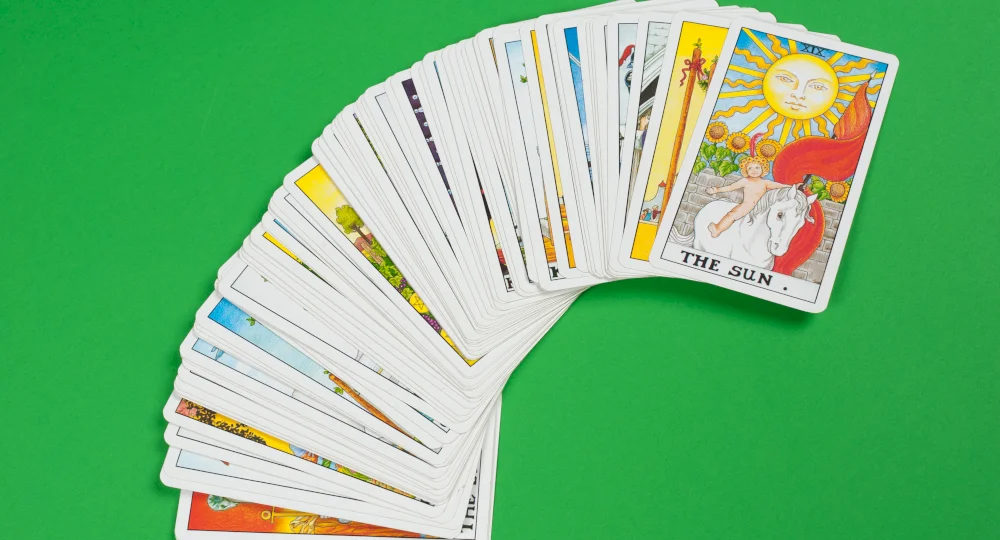
Understanding Tarot Reversals
July 29, 2025Nearly every tarot guide, including our blogs, covers reversed cards in tarot readings. However, the precise definition of a reversed card, particularly when considering various techniques of reading cards, is sometimes unclear.
Tarot Meanings Reversed: What You Should Know
After reading this article, you will learn:
- what are the two prevalent methods for reading tarot cards
- how to define a reversed card
- how to interpret tarot reversals in various readings
Two Main Ways to Read Tarot Cards
Tarot readers typically follow one of two approaches.
The first option involves interpreting cards that have been drawn and placed upside down (at a 180-degree angle) quite differently than when they are upright. From time to time we tend to draw such reversals, because we never arrange the cards so that they are in the same upright position after each reading (right?!). And many readers intentionally shuffle cards upside-down to ensure reversals appear naturally in their spreads.
The second assumes that we don’t care if a card appears upright or turned upside down in our reading.
Both techniques to interpreting readings are entirely acceptable, with the second tending to look a tad more “advanced” because it requires deeper intuition and more experience from the tarot reader. The first one simplifies interpretations and makes the whole reading more straightforward.
The decision on which strategy to pursue is entirely personal, similar to selecting a tarot deck that speaks to you. In the Advanced Tarot Online app, we implemented the first solution, as all the tarot readers who handle interpretations and readings do not use physical reversals in their practice.
It is worth noting that some decks are even created with reverse meanings in mind, exhibiting two separate meanings on the same card, the upright position and the reversed position. Also, there are spreads that require reversed cards, while others work better with all cards upright.
How to Read Reversed Tarot Cards
When we decide to read the cards that literally appear in our reading upside down, the case becomes obvious. The meanings of these cards will differ from those of the cards drawn upright. Most of them will be “badly aspected”, which means their interpretations will be significantly less positive. Some "bad" cards, however, will get a somewhat neutral meaning.
But what happens when we make a decision we do not care about upside down cards in a reading? Does this mean the reversals don't relate to our readings at all?
Of course, they do, but since we don’t read cards placed upside down, we must rely on another aspect. So we try to investigate the nearby cards to determine if they influence the meaning of the interpreted card, changing the whole message.
How to Interpret Reversed Cards: A Real-Life Example
Let us consider the concept of a greedy, selfish lady.
In a reading that includes physical reversals, she could appear as the Queen of Pentacles reversed, which is diametrically opposed to the giving and compassionate archetype of the Queen of Pentacles in an upright position.
In a reading without regard for physical reversals, the same individual, Queen of Pentacles, could be spotted in a company of 5 of Swords or 7 of Swords and the interpretation would be the same: a greedy woman (plus, perhaps a small note that such an attitude could evoke some undesirable grand finale for that person).
To Sum Up...
Two Ways to Spot "Reversed Energy" in Tarot Readings
| Method | How to Identify | Pros | Cons | Best For |
|---|---|---|---|---|
| Physical Reversals | Card appears upside-down in the spread | Clear visual cue; direct interpretation | Could require intentional shuffling to create reversals | Beginners or readers who prefer literal signs |
| Card Relationships | Nearby cards modify the meaning | No need to flip cards; intuitive approach | Requires deep knowledge of card combinations | Advanced readers or decks without reversals |
Both methods can identify blocked energy — whether through a literal reversed card or cards nearby.
You can use any of the methods described in this article to read tarot cards. Even if you do not consider physical reversals, you need to study a card's surroundings to decide whether or not its meaning is "reversed" and thus the card’s upright, default message changes or not. This is the key to meaningful, accurate tarot readings.



